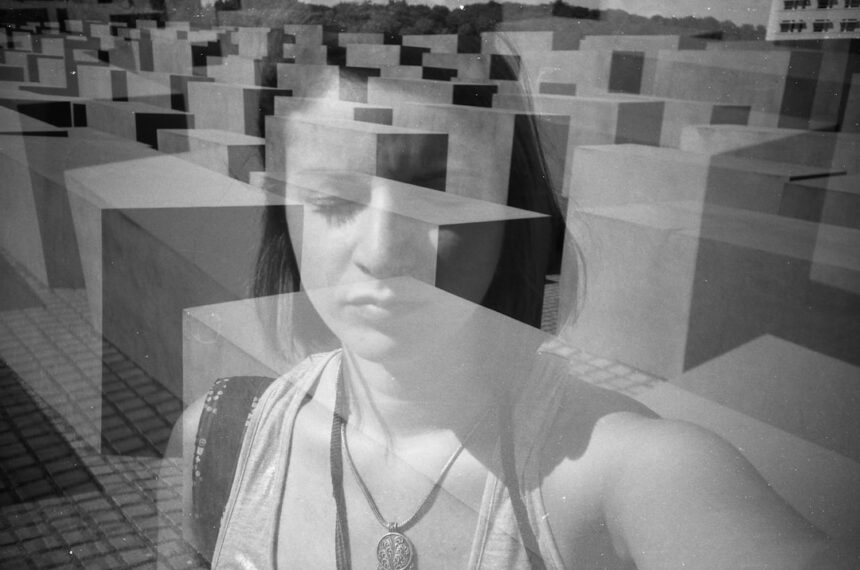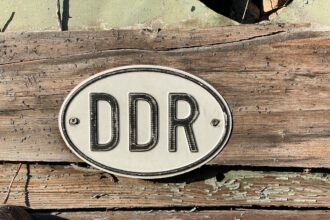Depersonalization-Derealization Disorder (DPDR) is a complex mental health condition that can leave you feeling detached from your own thoughts, feelings, and sense of self. Imagine looking at yourself in a mirror and feeling as though the person staring back is a stranger. This sensation can be disorienting and frightening, often leading to a profound sense of isolation.
You may find yourself questioning your reality, feeling as if you are living in a dream or watching your life unfold from a distance.
Understanding DPDR requires recognizing that it is not merely a fleeting feeling of disconnection; it is a persistent state that can disrupt your life.
You might experience episodes of depersonalization, where you feel detached from your body or thoughts, and derealization, where the world around you seems unreal or distorted. These experiences can be triggered by various factors, including overwhelming stress, anxiety disorders, or traumatic events. It’s essential to acknowledge that you are not alone in this struggle; many individuals experience similar feelings, and understanding the nature of DPDR is the first step toward finding relief.
Key Takeaways
- Depersonalization-Derealization Disorder is a mental health condition characterized by feeling detached from oneself and the surrounding environment.
- Symptoms of Depersonalization-Derealization Disorder include feeling like an outside observer of one’s thoughts and actions, experiencing a sense of unreality, and feeling emotionally numb.
- Seeking professional help from a mental health professional, such as a psychiatrist or therapist, is crucial for managing Depersonalization-Derealization Disorder.
- Treatment options for Depersonalization-Derealization Disorder may include therapy, medication, and lifestyle changes to address underlying causes and manage symptoms.
- Coping strategies for daily life with Depersonalization-Derealization Disorder may include mindfulness techniques, grounding exercises, and self-care practices to manage stress and reduce symptoms.
Recognizing the Symptoms
Recognizing the symptoms of DPDR is crucial for understanding your experience and seeking appropriate help. You may notice that during episodes, your thoughts feel disconnected from your emotions, leading to a sense of numbness or emptiness. This emotional detachment can make it challenging to engage with others or enjoy activities that once brought you joy.
You might also experience visual distortions, such as objects appearing larger or smaller than they are or feeling as if you are observing your life through a foggy lens. In addition to these symptoms, you may find yourself grappling with anxiety and fear about your experiences. The uncertainty of not knowing when an episode will occur can lead to heightened stress levels, creating a cycle that exacerbates your feelings of detachment.
You might also experience difficulty concentrating or remembering things, which can further impact your daily life and responsibilities. Recognizing these symptoms is vital for understanding your condition and taking the necessary steps toward recovery.
Seeking Professional Help

If you find yourself experiencing symptoms of DPDR, seeking professional help is an essential step toward regaining control over your life. A mental health professional can provide you with a safe space to discuss your feelings and experiences without judgment. They can help you understand the underlying causes of your depersonalization and derealization, whether they stem from anxiety, trauma, or other mental health issues.
By working with a therapist or psychiatrist, you can develop a tailored treatment plan that addresses your specific needs. In addition to therapy, a mental health professional may recommend various assessments to rule out other conditions that could be contributing to your symptoms. This comprehensive approach ensures that you receive the most effective treatment possible.
Remember that reaching out for help is a sign of strength; it demonstrates your commitment to understanding yourself better and improving your mental well-being. Taking this step can be daunting, but it is crucial for your journey toward healing.
Exploring Treatment Options
| Treatment Option | Success Rate | Side Effects |
|---|---|---|
| Medication | 70% | Nausea, dizziness |
| Therapy | 60% | None |
| Surgery | 80% | Pain, scarring |
Once you have sought professional help, you will likely explore various treatment options tailored to your needs. Cognitive-behavioral therapy (CBT) is one of the most common therapeutic approaches for DPDR. This form of therapy focuses on identifying and changing negative thought patterns that contribute to feelings of detachment.
Through CBT, you can learn coping strategies to manage anxiety and reduce the frequency and intensity of depersonalization episodes. In some cases, medication may also be recommended as part of your treatment plan. Antidepressants or anti-anxiety medications can help alleviate symptoms associated with DPDR by addressing underlying mood disorders or anxiety issues.
It’s important to have open discussions with your healthcare provider about the potential benefits and side effects of any medication prescribed. Finding the right combination of therapy and medication can take time, but with patience and persistence, you can work toward regaining a sense of normalcy in your life.
Coping Strategies for Daily Life
In addition to professional treatment, developing coping strategies for daily life can significantly enhance your ability to manage DPDR symptoms. Mindfulness practices, such as meditation or deep breathing exercises, can help ground you in the present moment and reduce feelings of detachment. By focusing on your breath or engaging in mindful observation of your surroundings, you can create a sense of connection to both yourself and the world around you.
Another effective coping strategy is journaling. Writing down your thoughts and feelings can provide an outlet for processing your experiences and emotions. It allows you to reflect on triggers that lead to episodes of depersonalization or derealization and helps you identify patterns in your experiences.
Additionally, engaging in physical activities such as yoga or exercise can promote overall well-being and reduce anxiety levels, making it easier for you to cope with the challenges posed by DPDR.
Building a Support System

Building a support system is vital for anyone dealing with DPDR.
You might consider sharing your experiences with those close to you so they can better understand what you’re going through.
This openness fosters empathy and creates an environment where you feel safe discussing your feelings without fear of judgment. In addition to personal relationships, consider joining support groups where you can connect with others who share similar experiences. These groups provide a platform for sharing coping strategies, discussing challenges, and celebrating progress together.
Knowing that others understand what you’re going through can alleviate feelings of isolation and reinforce the idea that recovery is possible.
Practicing Self-Care and Stress Management
Practicing self-care is essential for managing DPDR effectively. Prioritizing activities that bring you joy and relaxation can help counteract feelings of detachment. Whether it’s indulging in a favorite hobby, spending time in nature, or simply enjoying a warm bath, these moments of self-care contribute to your overall well-being.
Establishing a routine that incorporates self-care practices can create stability in your life and provide a sense of normalcy amidst the challenges posed by DPDR. Stress management techniques are equally important in maintaining mental health. You might explore various methods such as progressive muscle relaxation, guided imagery, or even art therapy as ways to express yourself creatively while reducing stress levels.
Finding what works best for you may take time, but experimenting with different techniques will empower you to take control of your mental health.
Long-Term Recovery and Maintenance
Long-term recovery from DPDR is an ongoing process that requires commitment and self-awareness. As you progress through treatment and develop coping strategies, it’s essential to remain vigilant about maintaining your mental health. Regular check-ins with your therapist or support group can help reinforce the skills you’ve learned and provide accountability as you navigate life’s challenges.
Additionally, continue practicing self-care and stress management techniques even after experiencing improvement in symptoms. Life’s stresses can fluctuate, and being proactive about your mental health will help prevent relapse into feelings of depersonalization or derealization. Remember that recovery is not linear; there may be ups and downs along the way.
Embrace each step of the journey as an opportunity for growth and self-discovery. In conclusion, understanding Depersonalization-Derealization Disorder is crucial for recognizing its symptoms and seeking appropriate help. By exploring treatment options, developing coping strategies, building a support system, practicing self-care, and committing to long-term recovery efforts, you can navigate this challenging condition with resilience and hope for a brighter future.
Depersonalization-derealization disorder (DDD) can be a challenging condition to manage, but there are several strategies and treatments that can help individuals cope with its symptoms. One effective approach is cognitive-behavioral therapy (CBT), which focuses on changing negative thought patterns and behaviors. Additionally, grounding techniques, mindfulness practices, and medication may also be beneficial in managing DDD. For more detailed information on these strategies and other therapeutic options, you can explore this related article on the topic: Understanding and Managing Depersonalization-Derealization Disorder. This resource provides valuable insights into the disorder and offers practical advice for those seeking to alleviate its effects.
LEARN MORE About Depersonalization & Derealization
FAQs
What is depersonalization-derealization disorder?
Depersonalization-derealization disorder is a mental health condition characterized by feeling detached from oneself (depersonalization) and/or feeling detached from the world around them (derealization). It can be a distressing and disruptive experience for those who suffer from it.
What are the symptoms of depersonalization-derealization disorder?
Symptoms of depersonalization-derealization disorder may include feeling like an outside observer of one’s thoughts, feelings, and body (depersonalization), feeling like the world is unreal or distorted (derealization), emotional numbness, and a sense of disconnection from oneself and the world.
What causes depersonalization-derealization disorder?
The exact cause of depersonalization-derealization disorder is not fully understood, but it is believed to be related to a combination of biological, psychological, and environmental factors. Trauma, stress, anxiety, and substance abuse are commonly associated with the development of the disorder.
How is depersonalization-derealization disorder diagnosed?
Depersonalization-derealization disorder is diagnosed based on a thorough assessment of the individual’s symptoms, medical history, and ruling out other potential causes. A mental health professional, such as a psychiatrist or psychologist, can make a diagnosis and develop a treatment plan.
What are the treatment options for depersonalization-derealization disorder?
Treatment for depersonalization-derealization disorder may include psychotherapy, medication, and self-help strategies. Cognitive-behavioral therapy (CBT) and mindfulness-based approaches have shown to be effective in helping individuals manage their symptoms. Medications such as antidepressants or anti-anxiety drugs may also be prescribed in some cases.
Can depersonalization-derealization disorder be cured?
There is no specific cure for depersonalization-derealization disorder, but many individuals can experience significant improvement and symptom management with appropriate treatment and support. It is important for individuals to work closely with mental health professionals to find the most effective strategies for managing their symptoms.




